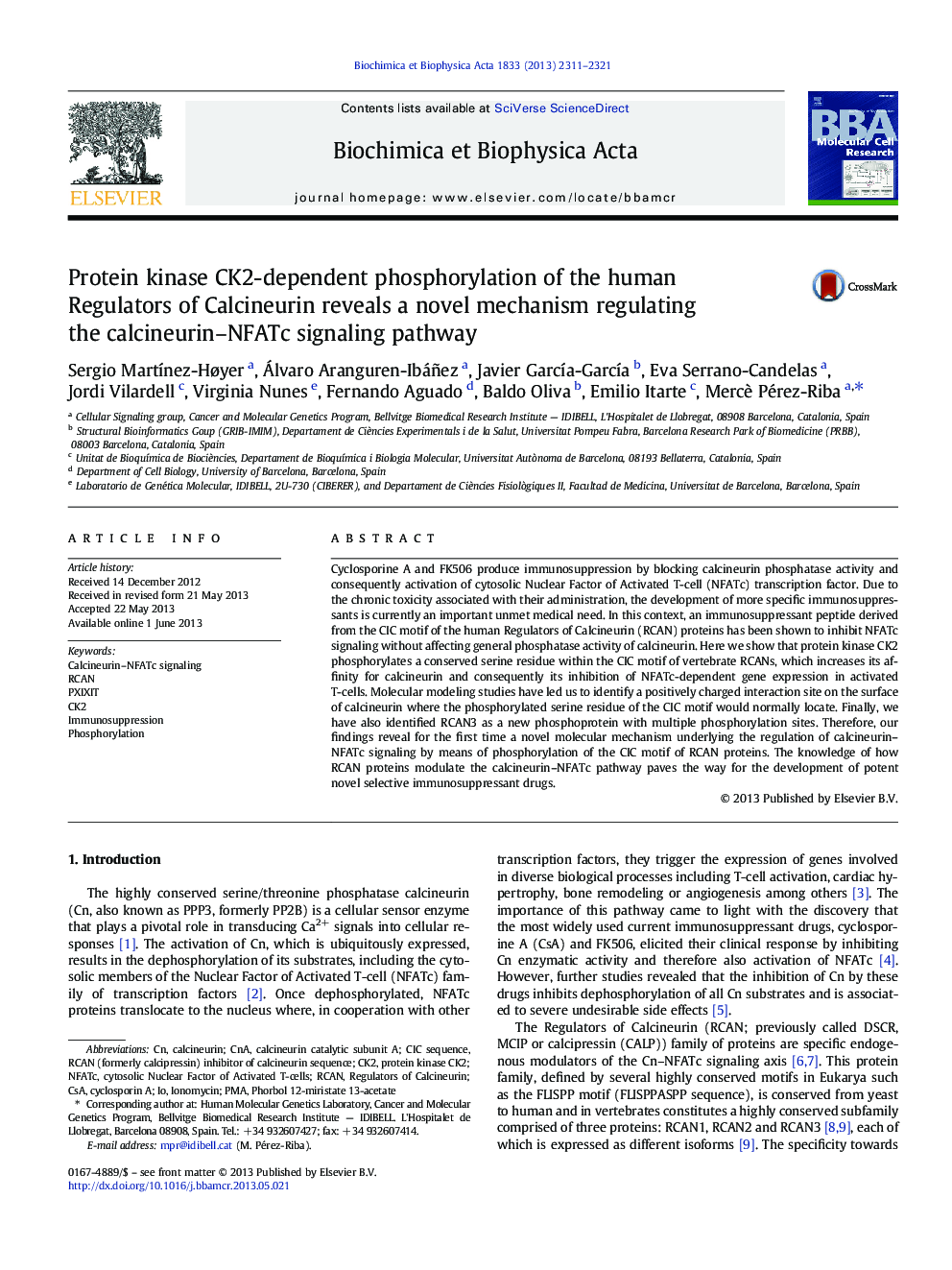| Article ID | Journal | Published Year | Pages | File Type |
|---|---|---|---|---|
| 10802281 | Biochimica et Biophysica Acta (BBA) - Molecular Cell Research | 2013 | 11 Pages |
Abstract
Cyclosporine A and FK506 produce immunosuppression by blocking calcineurin phosphatase activity and consequently activation of cytosolic Nuclear Factor of Activated T-cell (NFATc) transcription factor. Due to the chronic toxicity associated with their administration, the development of more specific immunosuppressants is currently an important unmet medical need. In this context, an immunosuppressant peptide derived from the CIC motif of the human Regulators of Calcineurin (RCAN) proteins has been shown to inhibit NFATc signaling without affecting general phosphatase activity of calcineurin. Here we show that protein kinase CK2 phosphorylates a conserved serine residue within the CIC motif of vertebrate RCANs, which increases its affinity for calcineurin and consequently its inhibition of NFATc-dependent gene expression in activated T-cells. Molecular modeling studies have led us to identify a positively charged interaction site on the surface of calcineurin where the phosphorylated serine residue of the CIC motif would normally locate. Finally, we have also identified RCAN3 as a new phosphoprotein with multiple phosphorylation sites. Therefore, our findings reveal for the first time a novel molecular mechanism underlying the regulation of calcineurin-NFATc signaling by means of phosphorylation of the CIC motif of RCAN proteins. The knowledge of how RCAN proteins modulate the calcineurin-NFATc pathway paves the way for the development of potent novel selective immunosuppressant drugs.
Keywords
Related Topics
Life Sciences
Biochemistry, Genetics and Molecular Biology
Biochemistry
Authors
Sergio MartÃnez-Høyer, Álvaro Aranguren-Ibáñez, Javier GarcÃa-GarcÃa, Eva Serrano-Candelas, Jordi Vilardell, Virginia Nunes, Fernando Aguado, Baldo Oliva, Emilio Itarte, Mercè Pérez-Riba,
